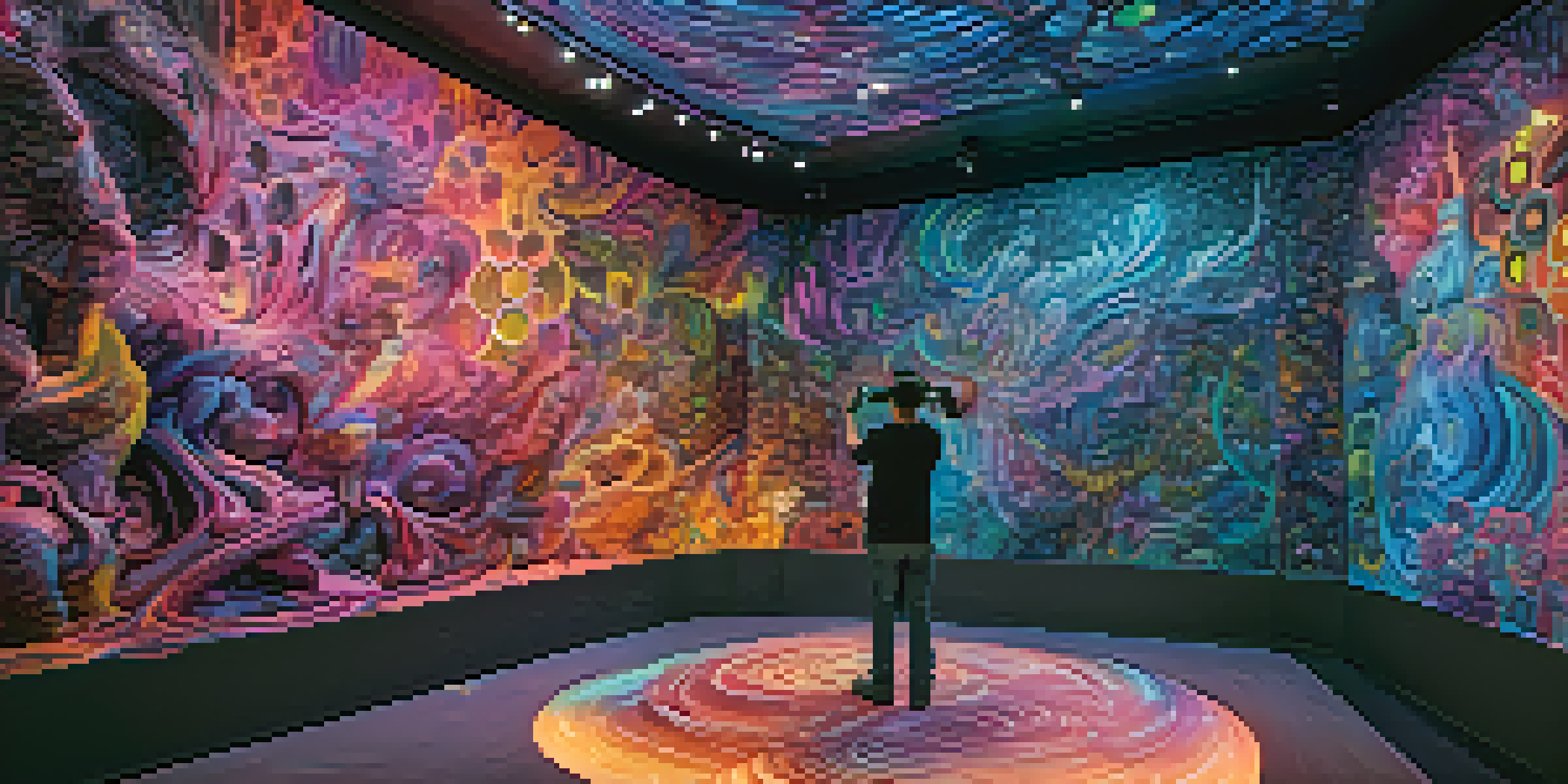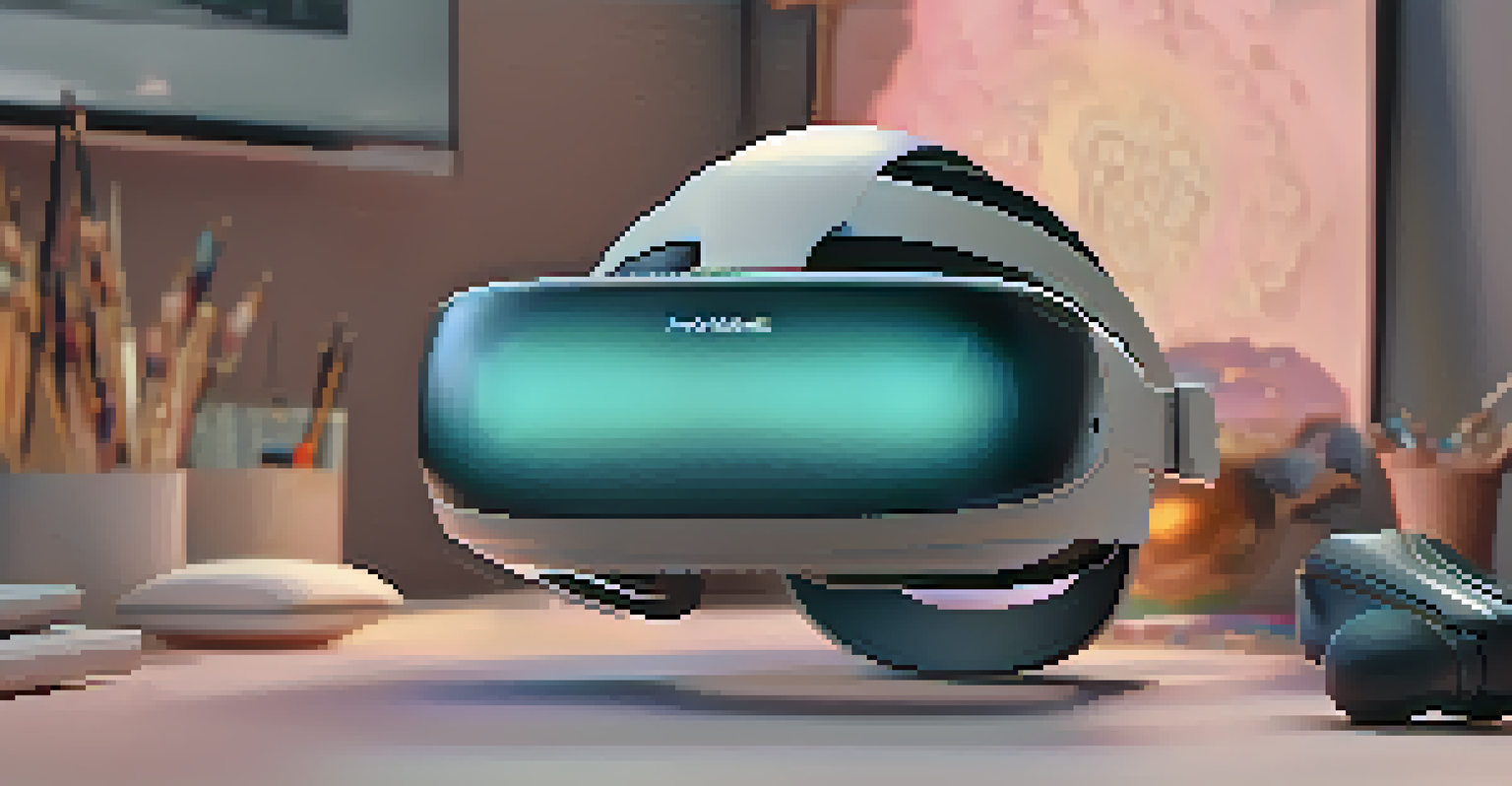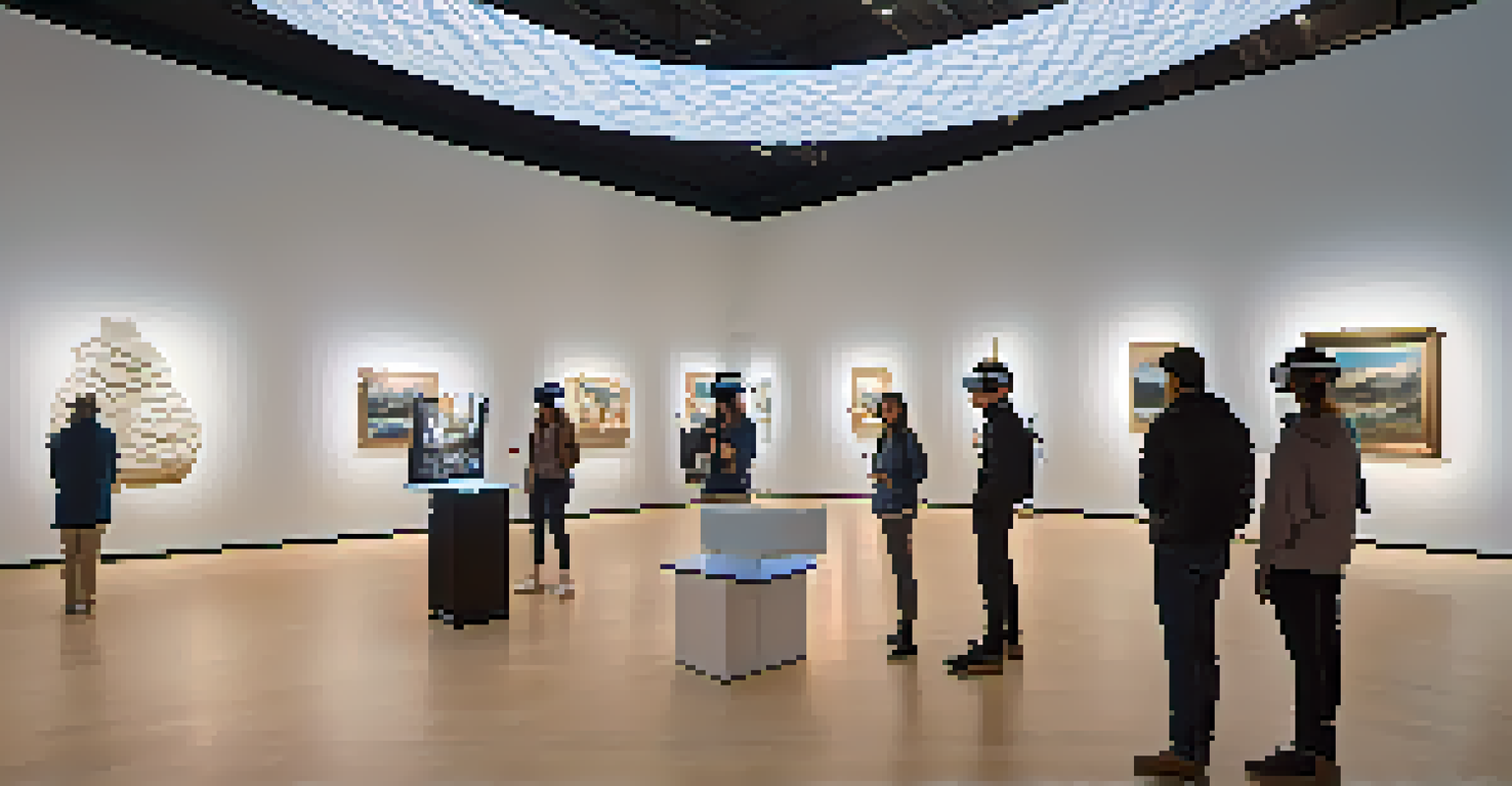Virtual Reality in Carving: A New Frontier for Artists

What is Virtual Reality and Its Artistic Potential?
Virtual reality (VR) immerses users in a computer-generated environment, allowing for interactive experiences. For artists, this technology opens up a new realm where they can create and manipulate 3D objects with incredible precision. Imagine walking around a virtual sculpture, examining every angle without the limitations of physical materials.
Virtual reality is the most immersive medium we’ve ever created. It’s a place where you can be anyone and do anything.
The combination of VR with carving art not only enhances creativity but also expands the possibilities for expression. Artists can experiment with forms and textures that might be impossible to achieve in the traditional medium. This technology essentially serves as a limitless canvas where imagination can run wild.
As VR tools become more accessible, they are attracting a diverse range of artists eager to explore this new frontier. The ability to sculpt in a digital space can lead to innovative techniques that blend traditional carving with cutting-edge technology.
The Evolution of Carving: From Physical to Digital
Historically, carving has been a tactile and labor-intensive art form, requiring a deep understanding of materials like wood or stone. However, with the advent of digital tools and virtual environments, artists are now able to transition from physical to digital carving. This shift allows for a more experimental approach, where mistakes can be easily corrected.

Digital carving in VR can mimic the feel of traditional tools, providing artists with a familiar experience while offering the advantages of digital flexibility. For instance, artists can easily adjust the size and shape of their creations in real-time, something that’s not possible with traditional methods. This adaptability fosters a more playful and exploratory mindset.
VR Transforms Artistic Expression
Virtual reality empowers artists to explore new creative dimensions, allowing for intricate designs and limitless experimentation.
Moreover, the digital nature of VR carving means that artists can share their work instantly with a global audience. This opens up opportunities for collaboration and feedback, propelling the evolution of carving as an art form into exciting new territories.
Tools and Technologies Shaping VR Carving
Several cutting-edge tools are making VR carving both accessible and enjoyable for artists. Devices like the Oculus Quest and HTC Vive allow artists to enter a virtual workspace where they can use hand controllers as digital carving tools. These controllers often come with haptic feedback, simulating the sensations of carving through various materials.
The artist is the creator of beautiful things. The critic is one who reveals that beauty is worth knowing.
Software platforms such as Medium and Gravity Sketch provide intuitive interfaces for sculpting in VR. These programs enable artists to create intricate designs and even collaborate with others in real-time, regardless of their physical location. With frequent updates and improvements, these tools are constantly evolving to meet artists' needs.
As these technologies continue to advance, we can expect even more innovative tools to emerge, further enhancing the VR carving experience. This ongoing evolution encourages artists to push the boundaries of their creativity and explore new techniques.
The Benefits of Virtual Reality in Artistic Expression
One of the most significant benefits of VR in carving is the reduction of physical limitations. Artists can explore complex designs without worrying about weight or the structural integrity of materials. This freedom allows for more ambitious projects, leading to stunning works of art that might not have been feasible in the real world.
Additionally, VR carving can be a more sustainable option for artists, as it minimizes waste associated with traditional carving materials. By creating in a digital environment, artists can experiment freely without the fear of wasting precious resources. This aspect appeals to eco-conscious creators looking to reduce their environmental footprint.
Digital Carving Enhances Flexibility
The transition from traditional to digital carving offers artists the ability to easily correct mistakes and manipulate designs in real-time.
Moreover, the ability to save and revisit previous works in VR means that artists can continually refine their ideas. This iterative process encourages growth and learning, ultimately enhancing their skills and artistry over time.
Challenges Artists Face in Adopting VR Carving
Despite the exciting possibilities, there are challenges artists must navigate when adopting VR carving. One primary concern is the learning curve associated with new technologies. Artists accustomed to traditional tools may find it daunting to shift to a digital environment, requiring time and patience to master the new skills.
Another challenge is the potential for isolation. While VR can connect artists worldwide, the experience itself is often solitary. This can lead to feelings of disconnect from the art community, which is something many artists value in their practice. Finding ways to maintain social interaction while engaged in VR carving is essential.
Finally, the cost of high-quality VR equipment can be a barrier for some artists. While prices are gradually decreasing, not everyone has the resources to invest in the latest technology. This disparity can limit access to the benefits of VR carving for emerging artists who could otherwise contribute to the evolving landscape.
Showcasing VR Carving: Exhibitions and Communities
As VR carving gains popularity, exhibitions dedicated to this unique art form are beginning to emerge. These showcases allow artists to present their virtual creations in physical spaces, bridging the gap between digital and traditional art. Viewers can engage with the works through VR headsets, providing an interactive experience that traditional art exhibitions cannot offer.
Additionally, online communities are forming around VR carving, where artists can share their work, techniques, and feedback. Platforms like ArtStation and social media groups facilitate discussions and collaborations, fostering a sense of belonging among artists. This camaraderie is crucial as they navigate the challenges of this new medium together.
Building Community in VR Art
As VR carving gains traction, artists are forming online communities and exhibitions that foster collaboration and shared learning experiences.
The rise of VR carving is not just about individual expression; it’s also about building a community of like-minded creators. As more artists engage in VR, the collective knowledge and creativity will undoubtedly lead to exciting developments in the art world.
The Future of Carving in Virtual Reality
Looking ahead, the future of carving in virtual reality appears incredibly bright. As technology continues to evolve, we can anticipate even more sophisticated tools that enhance the creative process. Imagine AI-driven assistants that help artists generate ideas or refine their techniques, making the carving experience even more intuitive.
Moreover, as VR becomes more integrated into art education, aspiring artists will have the opportunity to learn carving skills in a virtual environment. This approach could democratize access to artistic training, allowing individuals from diverse backgrounds to explore their creativity without the constraints of traditional materials.

Ultimately, VR carving represents a revolutionary shift in how art is created and experienced. As artists embrace this technology, they will undoubtedly redefine the boundaries of carving, paving the way for new forms of artistic expression and innovation.